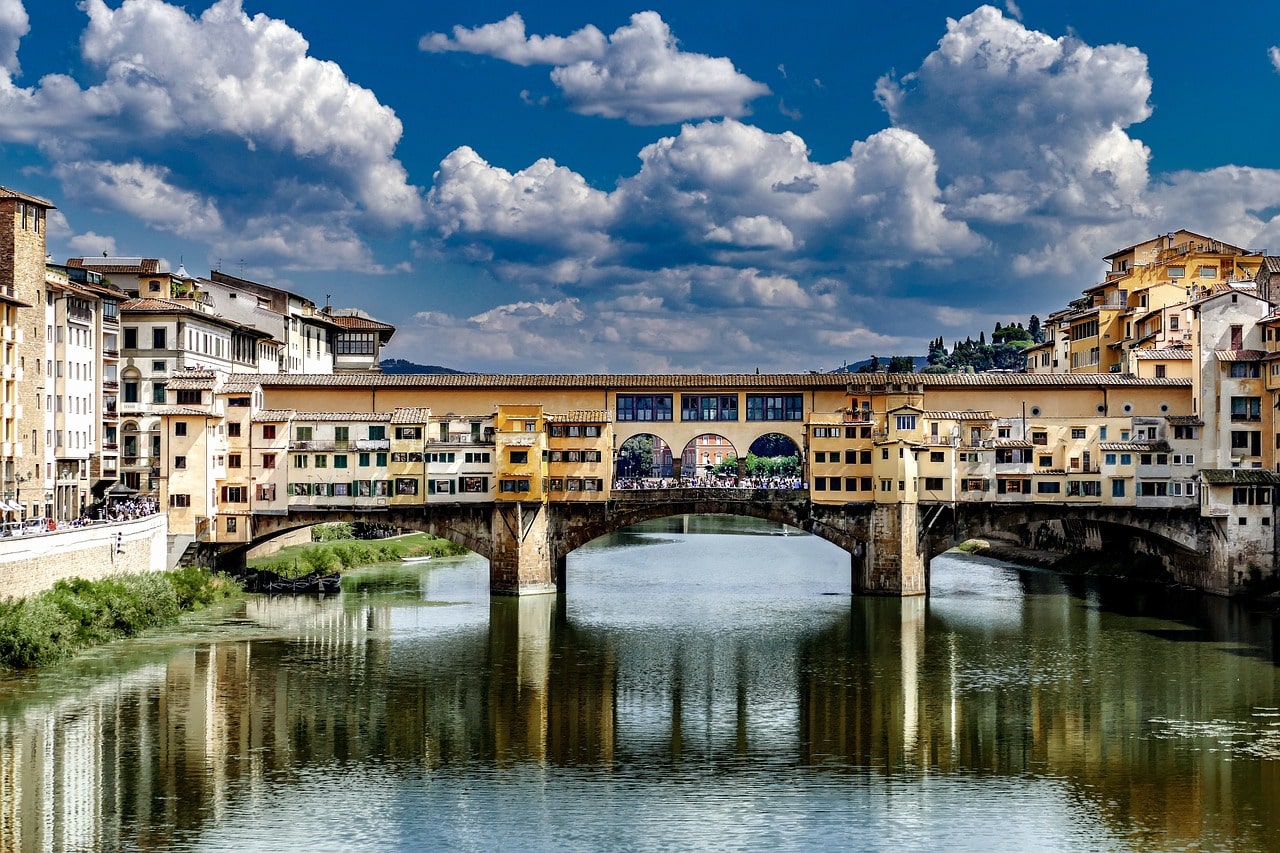

Indice
Florence, often referred to as the cradle of the Renaissance, stands as one of Italy’s most captivating cities. It’s a place where art, history, and culture coexist to create an unforgettable experience for each visitor. Whether you’re a passionate historian, an art enthusiast, or simply someone looking to immerse yourself in the charm of Italian culture, Florence has an abundance of treasures waiting to be explored. As you plan your visit, you must be well-prepared to maximize your enjoyment and make the most of your time in this extraordinary town.
Our comprehensive guide will delve into the must-see attractions, provide essential safety tips, and answer some frequently asked questions to help ensure a smooth and enriching visit to Florence.
Florence is globally recognized as the birthplace of the Renaissance, a period of profound cultural and artistic revival that forever changed the course of history. This city, nestled in the heart of Tuscany, offers a unique blend of art, architecture, and history that has captivated visitors for centuries. Florence’s historical significance is unmatched. It was here that legendary figures like Michelangelo, Leonardo da Vinci, and Dante Alighieri left their indelible mark on the world. The city’s historic center, a UNESCO World Heritage Site, is a living museum where every corner reveals a piece of the past.
The city is also a hub of contemporary culture, with lively markets, exquisite cuisine, and a calendar full of cultural events. Its intimate, walkable size allows visitors to easily explore its narrow, cobblestone streets and discover hidden gems around every corner. Whether you’re gazing at the awe-inspiring architecture of the Duomo, admiring the art in the Uffizi Gallery, or simply enjoying a gelato by the Arno River, Florence offers an atmosphere that is both romantic and deeply rooted in history.
Florence has an efficient public transport system, with buses covering most of the city. However, the historic center is compact and best explored on foot. If you plan to travel outside the town, Florence’s Santa Maria Novella train station offers excellent connections to other Tuscan cities and beyond.
To truly immerse yourself in the Florentine experience, consider staying in the historic center, where you’ll be within walking distance of the city’s major attractions. For those seeking a quieter stay, the Oltrarno district, across the Arno River, offers a more laid-back vibe with boutique hotels, artisan shops, and a lively local atmosphere.
To fully appreciate the city’s beauty and historical significance, certain sites should be at the top of every visitor’s itinerary. These attractions are the highlights of Florence and some of the most important cultural sites in the world.
The Ponte Vecchio, or “Old Bridge”, is not just a bridge but a symbol of Florence’s enduring charm. Spanning the Arno River, the bridge has been a vital crossing point since the Roman era. The current structure, built in 1345, is unique for its shops that line the bridge, a tradition that dates back to the 13th century. Originally, these shops were occupied by butchers, who would discard their waste directly into the river. However, in 1593, Duke Ferdinand I decreed that only goldsmiths and jewelers could have shops on the bridge, giving rise to the elegant boutiques you see today. Walking across the Ponte Vecchio is like stepping back in time, with the bridge offering stunning views of the Arno River and the cityscape beyond.
The Palazzo Vecchio is the town hall and also symbolizes the city’s political power. Built in the late 13th century, the Palazzo Vecchio served as the seat of government for the Republic of Florence and the residence of the ruling Medici family. Today, it is both a museum and a functioning city hall. The interior is a marvel of Renaissance art and architecture, with grand halls and chambers decorated with frescoes, sculptures, and tapestries. The most famous room, the Hall of the Five Hundred, was designed to accommodate the meetings of the Florentine Republic’s Great Council. Visitors can explore the palace’s many rooms, including the Medici family’s private apartments, and climb the tower for a spectacular view of the city.
The Duomo is perhaps the most recognizable symbol of Florence, a marvel of Gothic architecture that dominates the city’s skyline. The cathedral’s construction began in 1296 and took nearly 150 years to complete, a testament to the dedication and skill of the architects and artisans involved. The crowning glory of the Duomo is its solid dome, designed by Filippo Brunelleschi. This architectural wonder was an engineering breakthrough of its time, and climbing to the top offers a rewarding panoramic view of Florence and the surrounding Tuscan countryside. Inside, the cathedral is equally impressive, with stunning frescoes by Giorgio Vasari and intricate stained glass windows that bathe the interior in a kaleidoscope of colors.
As one of the most renowned art museums in the world, the Uffizi Gallery is a treasure trove of Renaissance masterpieces. The gallery was originally designed as offices (uffizi) for the Florentine magistrates, but it soon became a repository for the art collections of the Medici family. Today, the Uffizi Gallery houses an unparalleled collection of works by some of the greatest artists of the Renaissance, including Leonardo da Vinci, Raphael, Titian, and Caravaggio. A visit to the Uffizi is a journey through the evolution of Italian art, with each room offering a glimpse into the creative genius that flourished in Florence during the Renaissance.
The Pitti Palace is a testament to the wealth and power of the Medici family, who transformed it into one of the grandest residences in Europe. The palace houses several museums, including the Palatine Gallery, which features works by Raphael, Titian, and Rubens. Behind the palace, the Boboli Gardens offer a peaceful retreat from the confusion of the city. These gardens, laid out in the 16th century, are one of the finest examples of Italian garden design, with terraced lawns, ornate fountains, and classical statues. A stroll through the Boboli Gardens is like walking through an outdoor museum, where art and nature come together in perfect harmony.
Beyond its art and history, Florence is also famous for its food. Tuscan cuisine is known for its simplicity and use of fresh, local ingredients. When in Florence, be sure to try the bistecca alla Fiorentina, a thick-cut steak traditionally cooked over an open flame. Other local specialties include ribollita, a hearty vegetable and bread soup, and cantucci, almond biscuits typically served with a glass of vin santo, a sweet dessert wine.
The city’s unparalleled collection of art, historical landmarks, and cultural heritage draws in approximately 16 million visitors annually. This immense popularity means that Florence can be quite crowded, especially during the peak tourist season, which runs from May to September. Timing and preparation are the keys to a successful visit for those looking to explore the city’s treasures without the distraction of large crowds.
For a more relaxed experience, consider visiting Florence during the shoulder seasons—early spring (March to April) or late autumn (October to November). During these times, the weather is usually still pleasant, but the crowds are thinner, allowing you to enjoy the city’s attractions at a more leisurely pace. Moreover, you better start your day early to beat the crowds. Major attractions like the Duomo and the Uffizi Gallery are less crowded in the morning, giving you more time and space to appreciate their beauty. To avoid long lines, especially at popular sites, it’s highly recommended to book tickets online in advance. Many attractions offer timed entry slots, which can save you hours of waiting in line.
Florence is widely regarded as a safe city for tourists. The local authorities take great care to maintain a secure environment, and the crime rate is relatively low compared to other major European cities. However, as with any popular tourist destination, it’s important to stay aware of your surroundings and take basic precautions to ensure a safe and enjoyable visit.
One of the most common concerns for tourists in Florence is the risk of pickpocketing, especially in crowded areas such as markets, train stations, and popular tourist sites. Pickpockets often operate in teams and use distractions to steal wallets, phones, or other valuables. To protect yourself, keep your belongings secure and avoid carrying a lot of cash or valuable items. It’s also advisable to use a money belt or a cross-body bag with a secure closure.
If you need an entry visa to Italy for tourism, read the complete guide that Welcome Association Italy has created to help foreign citizens who want to stay in our country.
And if you need assistance, don’t hesitate to get in touch with our Union and discover the advantages reserved for those who join.
